How to Choose the Right Landscape Design Style for Your Meaford Home
You want your outdoor space to feel like an extension of your home: personal, beautiful, and maybe even a little magical. But with endless Pinterest boards, HGTV clips, and design trends flying around, deciding on the right landscape design style can feel more like a guessing game than a guided process.
It’s easy to fall into the trap of choosing based on looks alone, only to realise the style doesn’t suit your lifestyle, your climate, or the land itself. That disconnect can lead to more upkeep, missed opportunities, or a space that never quite feels finished.
This guide helps you navigate that decision with clarity. Whether you’re drawn to wildflower chaos or clean architectural lines, you’ll find practical direction rooted in how you live and where you live. Every recommendation comes from professionals who work directly with Meaford properties, bringing insight into the soil, the seasons, and the kind of design that holds its own through change.
Start with Your Landscape’s Purpose
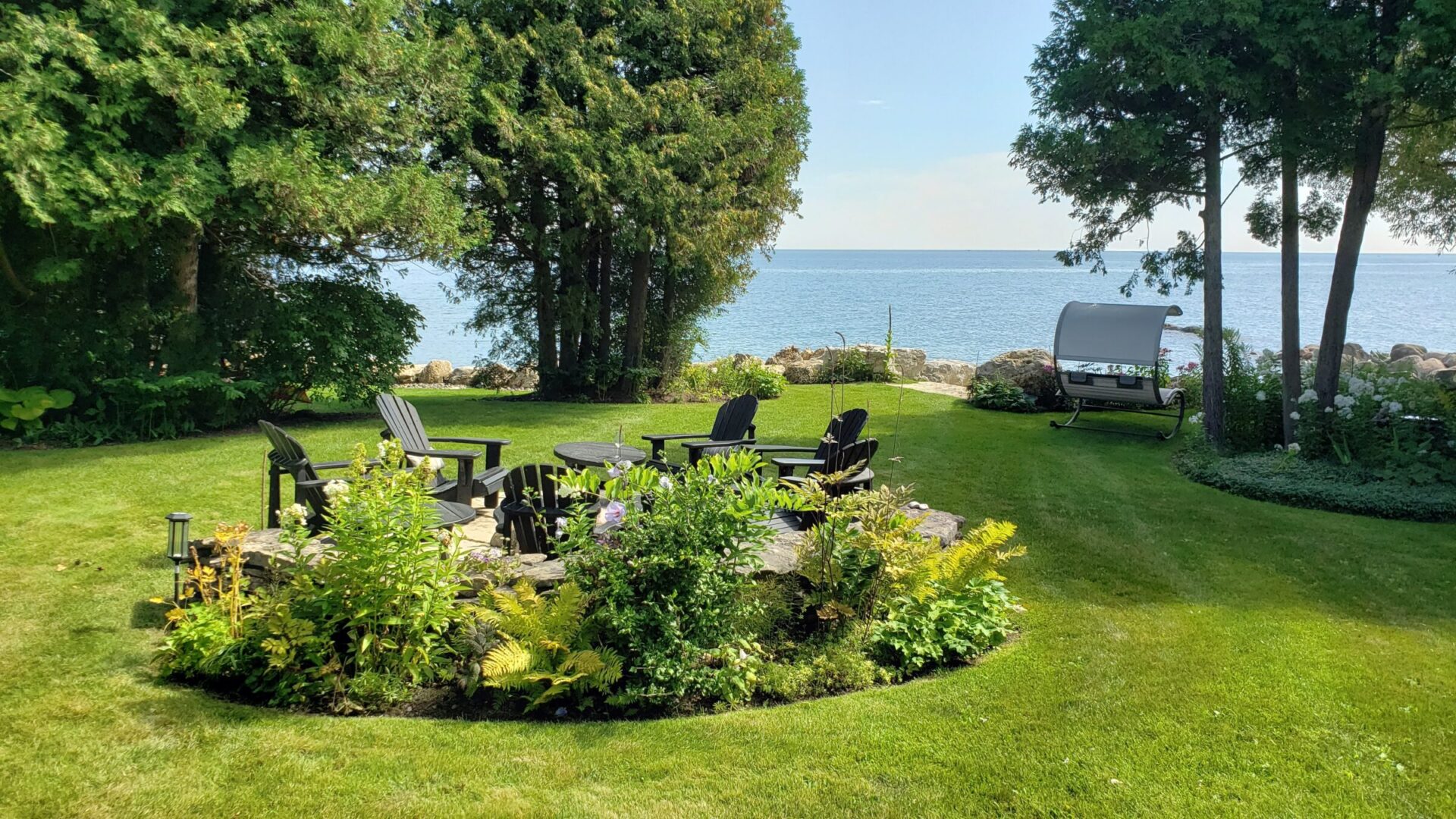
Before you start picking plants or materials, take a moment to think about how you want your outdoor space to function. Will it be your private retreat for winding down after work, a lively space for weekend entertaining, or a safe, open area for kids to play?
Maintenance plays a big role too. If you’re not the gardening-every-weekend type, you’ll want a design that doesn’t demand constant attention. Think about your environmental values as well. Want to support local pollinators or reduce your water use? These priorities should influence your planning from the start, not be an afterthought.
Landscape design in Meaford reflects the diversity of its terrain and the personalities of those who live here. From breezy waterfront lots to forested backyards, each property offers something different, and that difference should guide your design choices. These landscape styles help shape an outdoor space that reflects your taste, your lifestyle, and how much maintenance you’re actually up for.
Naturalistic & Eco-Friendly Gardens: Wild Beauty, Thoughtful Choices
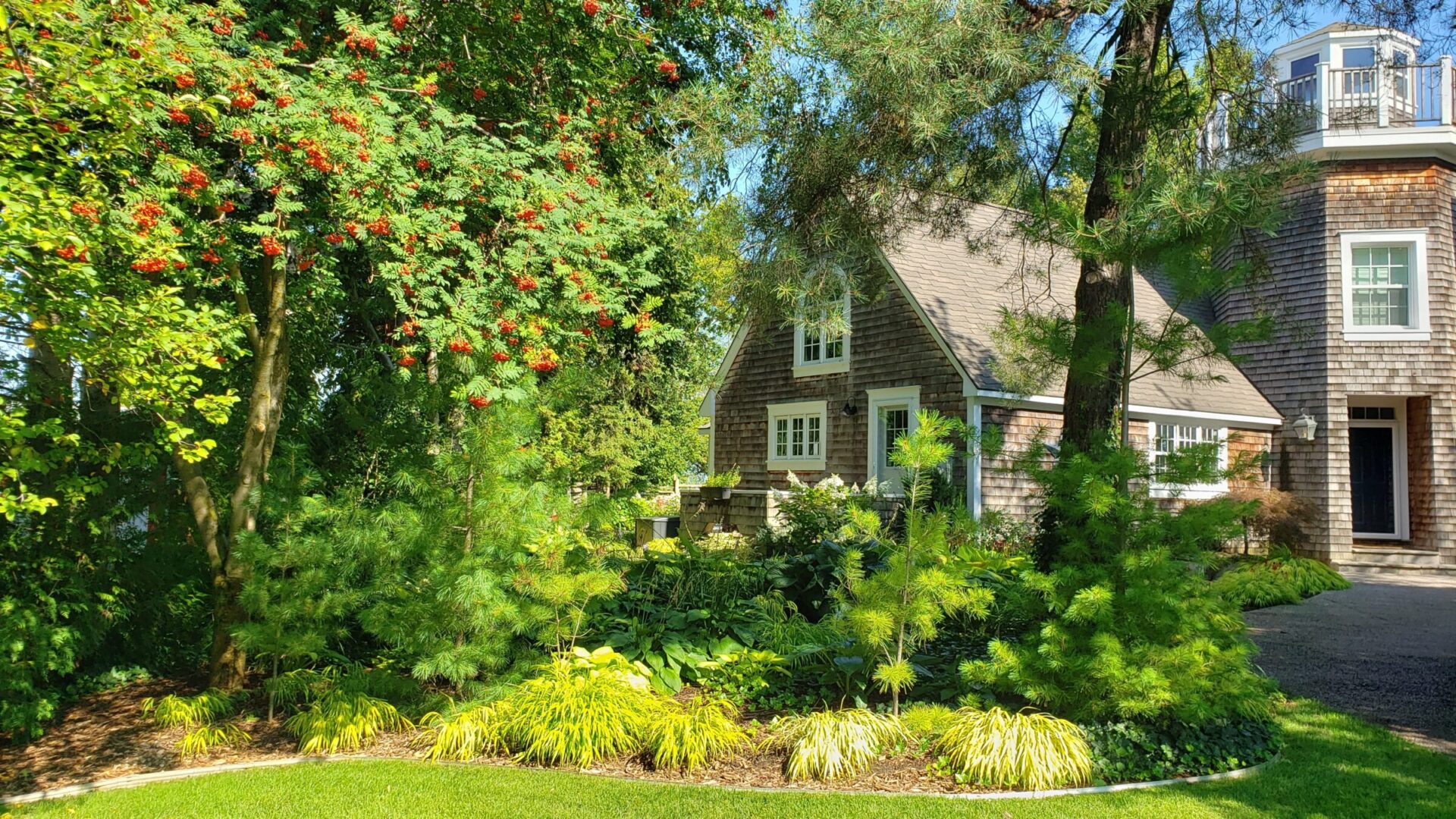
This style follows nature’s lead. Native plants like echinacea, goldenrod, and switchgrass bring colour and movement, while also supporting pollinators and local wildlife. These plants are resilient in Meaford’s conditions and ask for very little in return: less watering, fewer pest issues, and no chemicals.
Naturalistic gardens tend to feel like they belong to the land. Picture curved planting beds, irregular groupings of shrubs and perennials, and a mulch path that winds past a dry creek bed made to handle spring runoff. Use boulders for visual structure and let seasonal shifts bring quiet changes to the palette.
Cottage Gardens: Loose, Lush, and Joyfully Packed
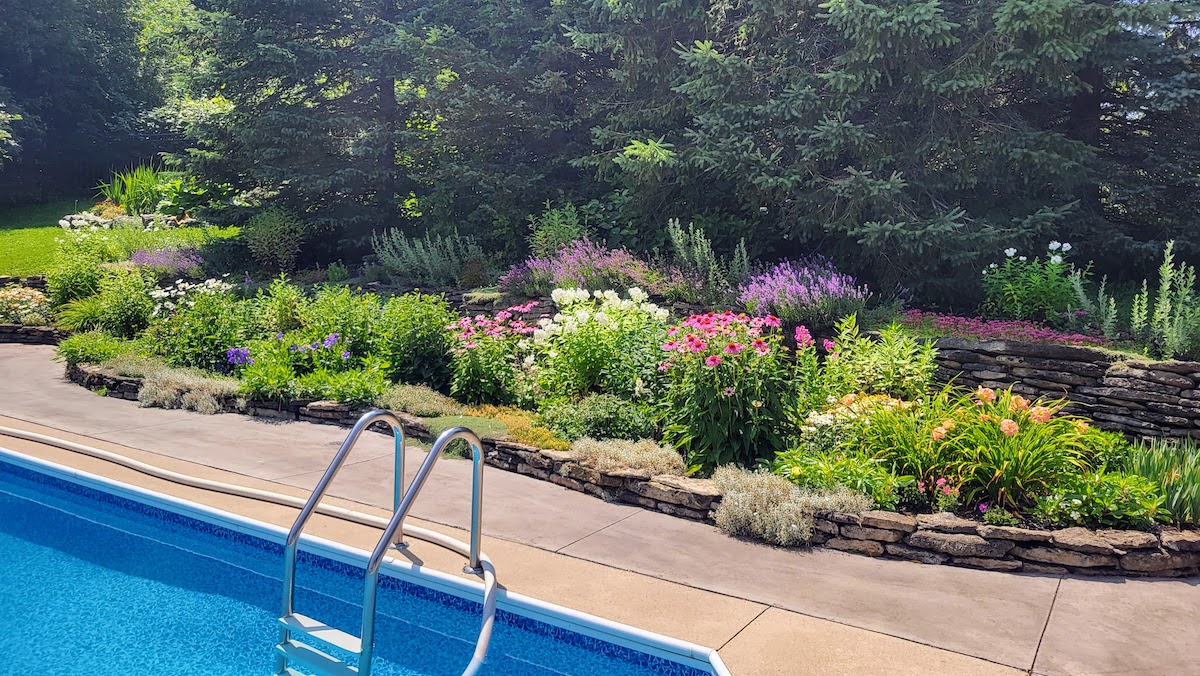
There’s a sense of abundance here that feels both relaxed and alive. Cottage gardens thrive on diversity and density, with plants like black-eyed Susans, lavender, climbing roses, and bee balm sharing the same beds. Fruit shrubs and herbs tuck into the mix, creating layers of colour, texture, and scent.
In Meaford, where the soil is rich and the growing season is active, this style rewards hands-on care and compost-rich planting. Stone pathways, vintage trellises, and rain chains can add charm without turning the space overly ornamental. Dense planting helps suppress weeds while offering constant activity from birds and pollinators.
Modern Minimalist Gardens: Clean Lines, Clever Contrast

Minimalist landscapes focus on the fundamentals: form, structure, and strategic contrast. Instead of layered planting beds, you might focus on a limited palette of a few grasses, a groundcover, and a standout shrub or tree with architectural shape. Materials like poured concrete, steel edging, or gravel offer texture without distraction.
You could set tall blue oat grass against a pale retaining wall, or run LED strip lighting beneath a cedar bench for evening interest. In a climate like Meaford’s, where visual clutter can get lost under snow or spring growth, minimalist design provides a steady sense of order that doesn’t depend on full bloom.
Japanese Zen-Inspired Gardens: Quiet, Composed, Reflective
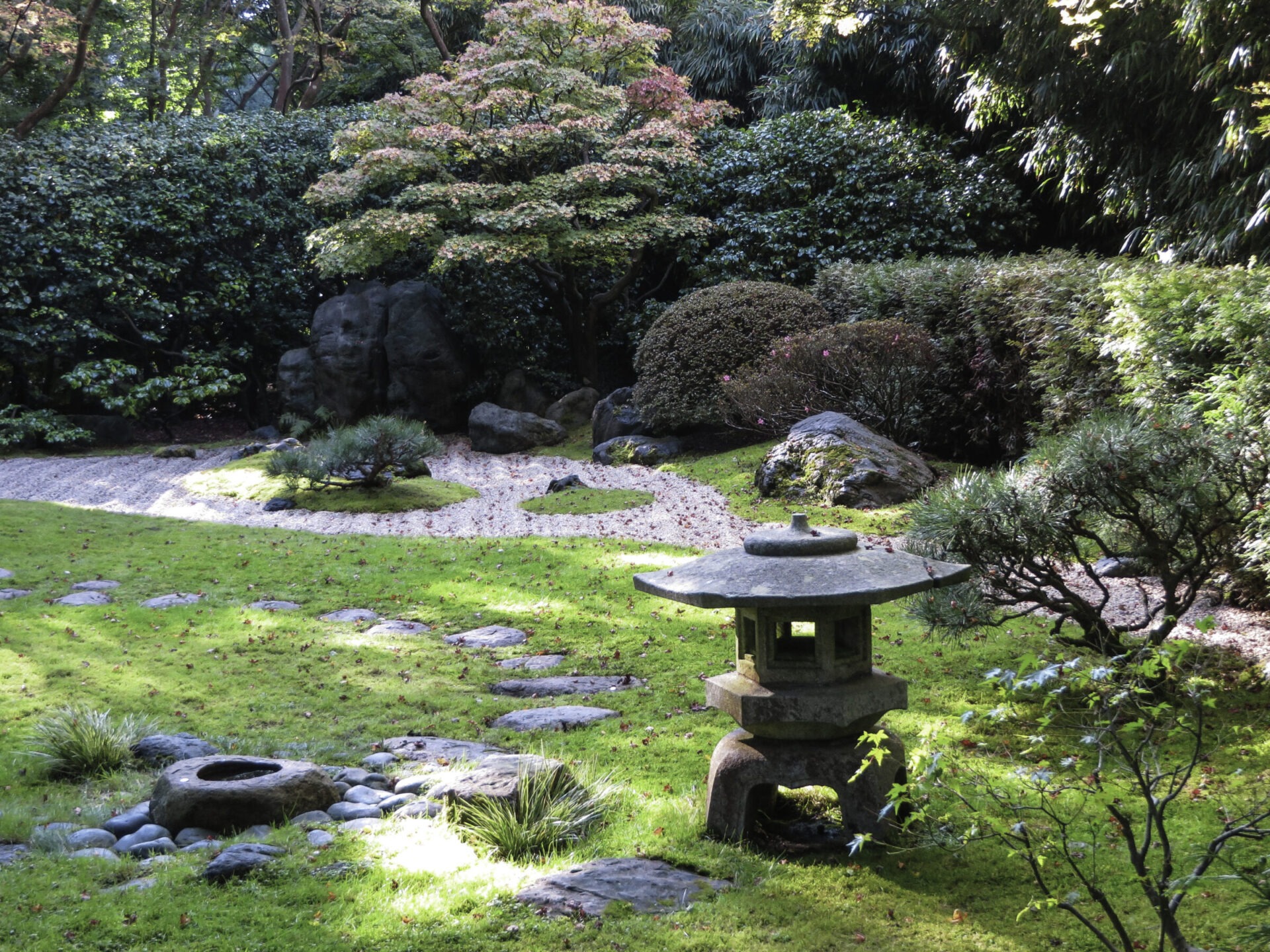
Zen-style landscapes encourage stillness and simplicity. They use fewer plants and more structure, often relying on stone, gravel, and water to shape the experience. Every element is intentional, like incorporating dwarf evergreens for softness, bamboo or maple for height, and moss between stepping stones to soften transitions.
Rather than filling every space, this style focuses on what each feature contributes to the overall rhythm. In Meaford, that might mean using cedar slats to create filtered privacy, or setting a granite basin where rainwater can quietly collect. These gardens work well in corners or courtyards where calm is the goal and maintenance stays light.
Working With the Meaford Climate
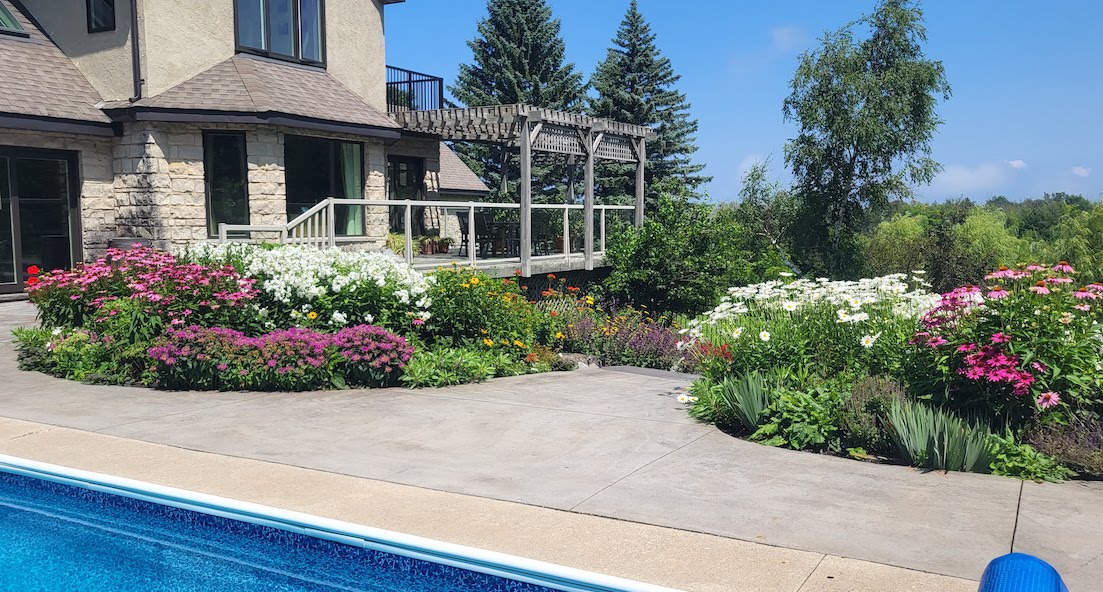
Designing for Meaford means working with contrast. Rocky soils, fluctuating winds, and a mix of long winters and humid summers create a landscape that needs more than surface-level appeal. Planning with the environment in mind helps you create a space that functions well and holds its shape as conditions shift.
Begin by watching how your yard reacts. After a heavy rain, where does the water sit? Which areas stay damp or dry out quickly? In early spring, pay attention to wind exposure. In late fall, take note of where frost sticks around the longest. These microclimates will shape which plants thrive and where to place key features.
Design decisions that respond to these patterns can save time and reduce upkeep. Raised beds work well in spots with heavy, moisture-retentive soil. Wind-prone corners benefit from feather reed grass or serviceberry shrubs, which act as soft barriers without closing in the space. These choices support healthier growth and cut back on troubleshooting later.
Habits That Support Long-Term Health

Landscapes with staying power usually have a few things in common: practical design, simple care routines, and an understanding of what the land can naturally support. A few changes in how you manage your space can go a long way.
Use Water Thoughtfully
Rain barrels placed under downspouts are one of the easiest ways to repurpose runoff for watering garden beds or containers. Skip plastic or decorative mulch and choose organic materials like shredded bark, chopped leaves, or straw. These protect soil and help keep moisture where it’s needed. Tough, adaptable plants like butterfly weed and Russian sage can thrive through Meaford’s dry spells without constant tending.
Prioritize Soil Over Shortcuts
The better your soil, the easier everything else becomes. Compost, aged manure, or leaf mold helps with texture, drainage, and nutrient cycling. You don’t need to guess at amendments, as an inexpensive soil test will show what’s missing so you only add what’s needed. Which gives you clarity that can ultimately save you time, effort, and money.
Manage Pests and Weeds Naturally
Well-timed planting and smart combinations can handle more problems than sprays ever will. Marigolds planted near vegetables can confuse insect pests. Aromatic herbs like thyme and sage discourage invaders and add flavour to your kitchen garden. Keep a hori-hori knife or stirrup hoe handy. When used regularly, they’re some of the most effective tools for keeping weeds in check.
When to Call in a Landscape Designer

There’s a point when a weekend project turns into a bigger vision. If you’re considering changes that involve grade correction, hardscaping, or structural additions like a deck or pergola, an experienced landscape designer can help map out a plan that makes sense for both your property and your goals.
Working with someone who knows the intricacies of Meaford’s terrain means you’re getting more than surface-level design. A skilled designer will assess how conditions impact the land, recommend materials that suit the climate, and create layouts that stay practical over time. This expertise ensures your landscape design in Meaford is clear, purposeful, and free from unnecessary complications.
Your Garden, Your Story
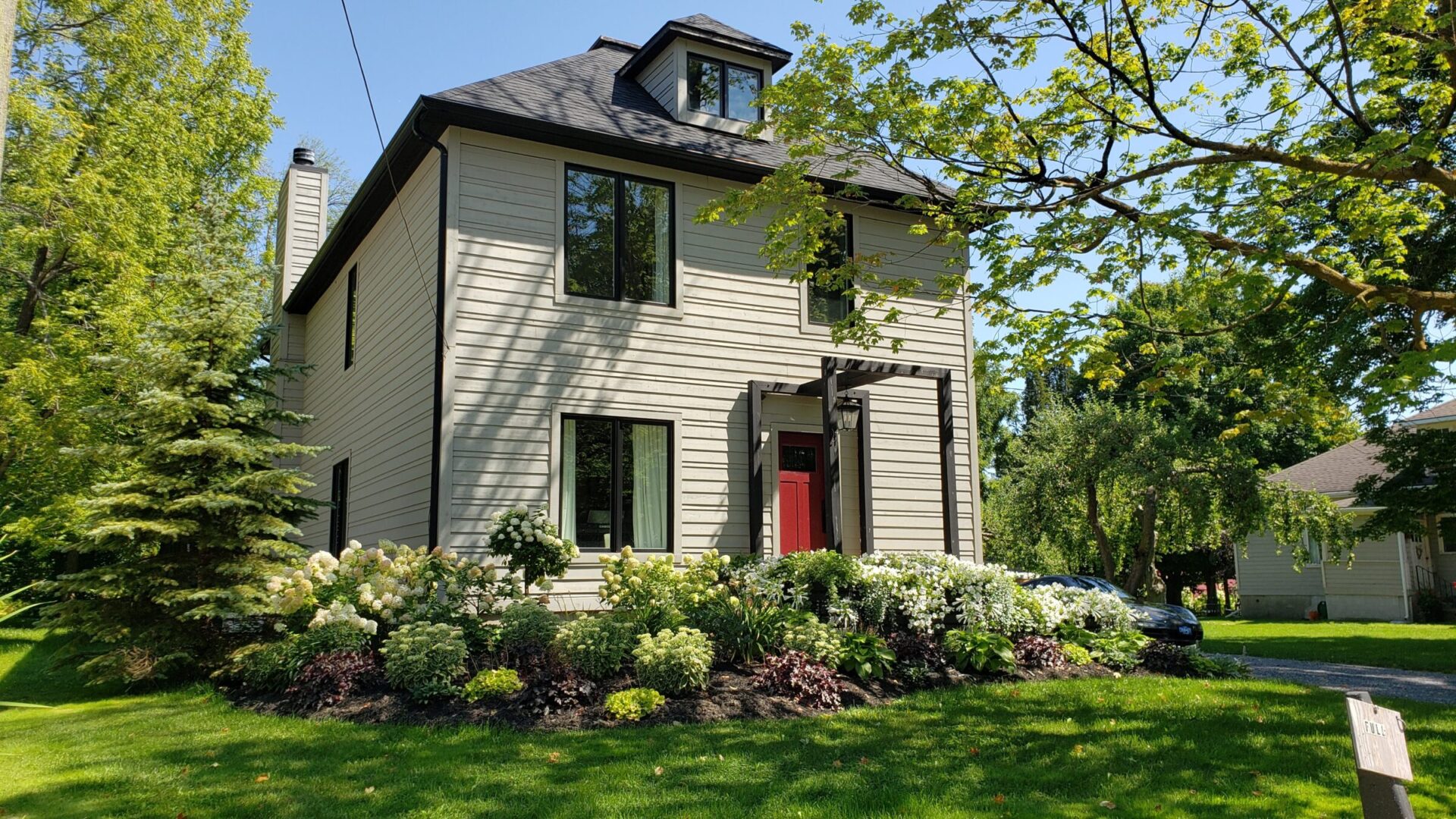
Now that you’ve explored different design styles, visualized how they might look on your own property, and learned how Meaford’s climate shapes the choices that last, it’s time to take that knowledge and start experimenting. Whether it’s carving out a quiet spot with feather reed grass and stone, or trialing a small cottage garden bed with pollinator-friendly perennials, your landscape doesn’t have to be perfect from day one—it just has to start with intention.
If you’re looking to refine your vision and make confident, well-informed decisions, The Ultimate Guide to Residential Landscaping in Meaford, Collingwood, The Blue Mountains & Grey Highlands, you’ll find smart ways to plan your layout, avoid overcomplicated features, and select materials that perform well in Meaford’s mixed soil conditions. It also covers essentials like stormwater management, outdoor living design, and native plant selection and more. It’s a hands-on resource designed to help you think big, avoid costly mistakes, and bring together style and sustainability across every inch of your yard.
And when you’re ready to start turning vision into form, Garden Holistics is here to help. Our work is rooted in thoughtful design, native plantings, and a commitment to building landscapes that last. Request a consultation and let’s build something meaningful together.